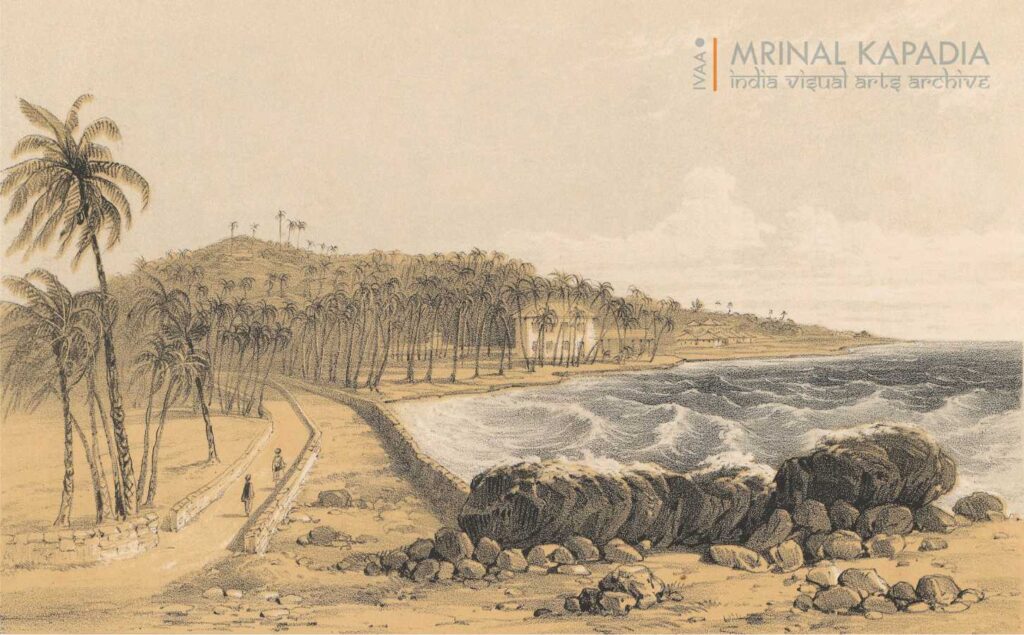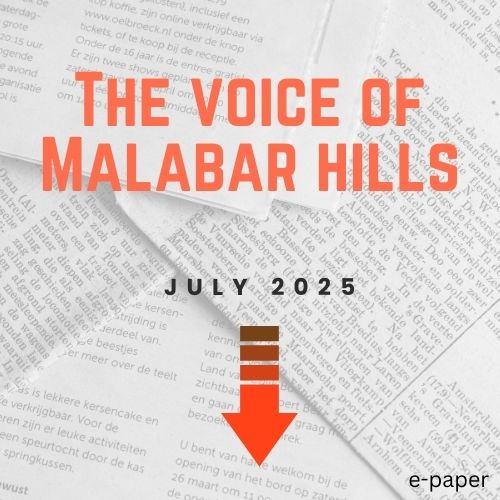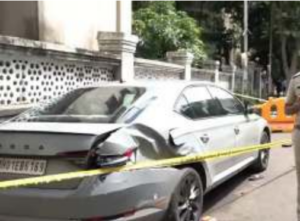
Breach Candy, an upscale residential stretch along the shoreline west of Cumballa Hill, was a rural suburb of Bombay as late as the early 20th century. The region between the northern part of Breach Candy upto the end of Haji Ali road, before the beginning of Worli, was referred to as the Great Breach (a stretch of water that the East India Company administration was unable to keep out at a time when the Arabian Sea reached as far inland as Parel), which is perhaps where the name Breach Candy comes from, but this etymological root is disputed.
This entire area was known for scattered residential
bungalows, and one in particular, called Vaucluse, a “handsome residence”which
can be seen “peeping picturesquely” from the coconut grove in this image, stood
out and was in high demand whenever vacant. Vaucluse was then known to have
bookended a tiny bay along with the Shree Mahalaxmi Temple. Hence, as per the
description in the travelogue where this view features, it is possible that this
perspective was sketched from the base of the temple complex mound itself, with
this small bay visible in the middle distance.
The travel account was written by one James Gray, who was in
Bombay in 1851, and the artist of the view went by the name Ms. Cormack. Not
much is known about either, as both in actuality preferred to remain anonymous
(or perhaps the book’s publisher didn’t want their names known), and it is
sheer luck that their names became known.
There is additional evidence to indicate that this bungalow
would’ve been somewhere at the intersection of Warden and Nepean Sea Road, near
the location of Ben Nevis, which means the bungalow would’ve been further off
than what we see, and artistic liberties were taken in order to accentuate the
bungalow’s features.This image also seems to partially account for why Breach
Candy (specifically Warden / Bhulabhai Desai Road) floods every monsoon, with
the rain water from various parts of Malabar Hill, seen in the background,
flowing down into the crowded street.
Here is a description from 1850s of this area: “And next in
favour (after the Esplanade), not only for the evening drive, but as a place of
permanent residence, comes the Breach, which is a flat shore on one side of the
island, composed of broken up black rocks, against which the foaming surf is
perpetually dashing, presenting to the artist’s eye that powerful contrast of
black and white, in which the wild genius of a Salvator Rosa would delight to
revel.”.
On 13th January 1830, readers of the Bombay Gazette woke up
to the following report: “A large hyena is prowling about Malabar Hill on the
western side between Mr. Nicol’s residence and Vaucluse, as good sport as a
Mazagon Tiger”. Highlighting the simultaneously rural and urban nature of
Bombay at this time, the Asiatic Society Town Hall was being built a few
kilometres away in the Fort area. And by the 1850s, Bombay would also herald
the arrival of the railways in India, which would forever remove this rural
characteristic of it’s nature.
(Picture and article by Mrinal Kapadia, resident of Cumballa
Hill, he is a collector and researcher, and can be reached on
mrinal.kapadia@gmail.com or via Instagram on @mrinal.kapadia)





